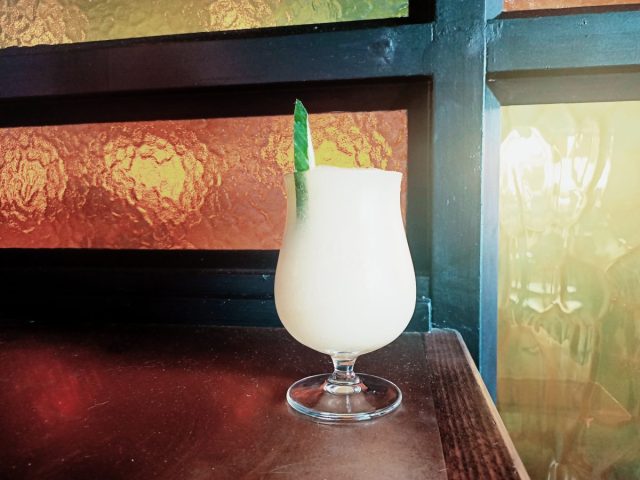In celebration of World Absinthe Day yesterday, Bars and Clubs sat down with Reece Griffiths, Group Bars Manager at Solotel, to talk about bringing the green fairy onto cocktail menus.
Absinthe’s use in cocktails began in late 1800s New Orleans when classic cocktails such as the Sazerac were developed. The spirit’s popularity grew with the foundation of absinthe houses, frequented by famous figures like Oscar Wilde, Mark Twain, and Frank Sinatra, until a widespread wave of bans saw absinthe essentially outlawed in the US and much of Europe by the onset of the First World War.
However, absinthe is far from a relic of history, and still features on cocktail menus today. Solotel’s Chez Blue features three absinthe cocktails: the classic Sazerac, an elevated Absinthe Frappe, and the Clipper, a take on the Pan American Clipper featuring Aussie aperitif Rhubi Mistelle.
Reece explained that the cocktail menu was a way to introduce Australian audiences to absinthe and other similar spirits.
“Absinthe is pretty unknown, especially in Sydney. The idea with our cocktail offering was to start gently, and open doors for people with those classic aperitif style spirits like absinthe and pastis,” he said.
As is common with French-style cocktail menus, particularly those served alongside food, the Chez Blue cocktail menu is divided into aperitifs, mid-meal cocktails, and digestifs. Currently, the aperitif and digestif sections are less popular choices, and sometimes require explanation before guests understand the occasions.
“The aperitif and digestif sections are the slower moving parts of the cocktail menu. Drinks like the Absinthe Frappe and Suze and Tonic are popular among people who have travelled or spent some time in France and recognise them already. For people who haven’t spent time around that culture, it’s more of a hard sell,” Reece said.
The consumer education has already started to show results, with Reece noticing more people trying the absinthe and pastis options on the menu.
“It is slowly building momentum. I never expected those drinks to be something that flew out the door, but I really wanted to start the process of getting people used to that style of drinking in Australia,” he said.
Reece highlighted the important of complementing Chez Blue’s food offering with the cocktail menu, as the cocktail bar is a small section of the broader venue. However, while the food at Chez Blue is predominantly French, the cocktail menu has a different inspiration.
“I didn’t want the cocktail menu to be too classically French, full of Sidecars and very cognac-focused, especially because our cocktail drinkers are not a dark spirit focused market for the most part. I wanted a bit more flexibility.
“One of my favourite cities is New Orleans, so I was very much inspired by the French connection there and the breadth it gave me in terms of classic cocktails to use as a base,” Reece said.
Even though the absinthe cocktails on Chez Blue’s menu draw inspiration from classic New Orleans recipes, Reece still sees a potential for absinthe in the modern bartender’s spirits arsenal. In particular, he is drawn to absinthe’s versatility and complex flavour profile.
“Anything that’s in that herbal, aromatic realm is a great modifier in cocktails. It allows a lot of versatility and a large range of spirits that it can be paired with,” he said. “Absinthe gives a lot of impact without having to use a lot of spirit. It allows you to build so much complexity in cocktails and gives a beautiful herbal flavour without being too overpowering, if it’s used in the right way.”



